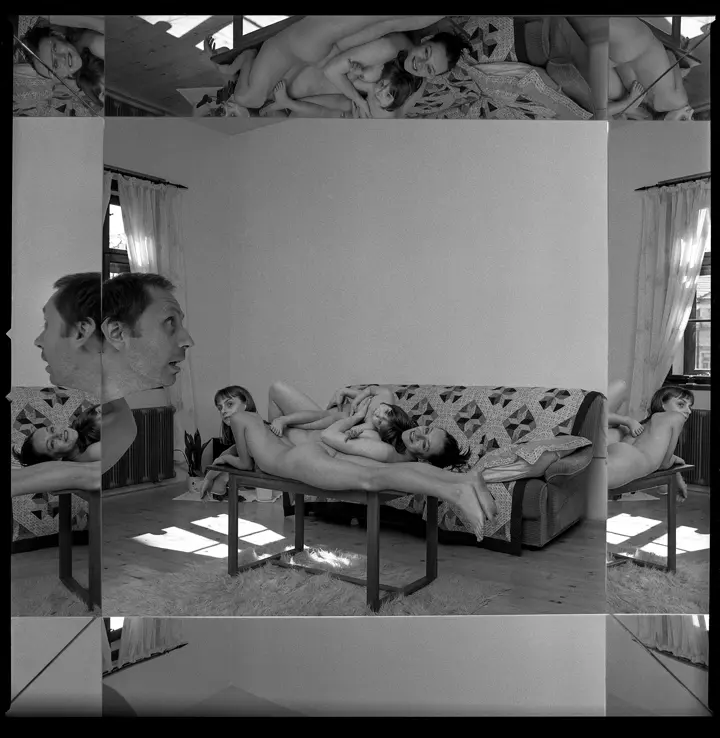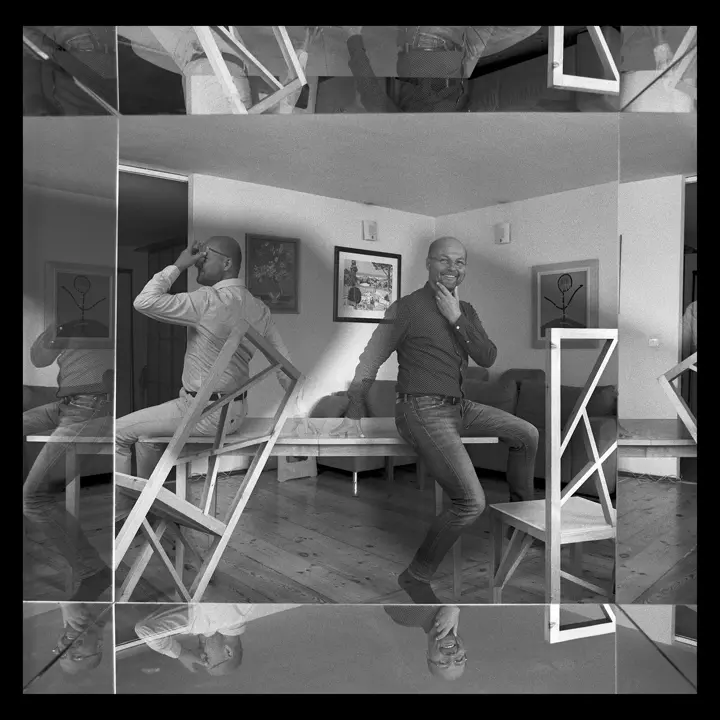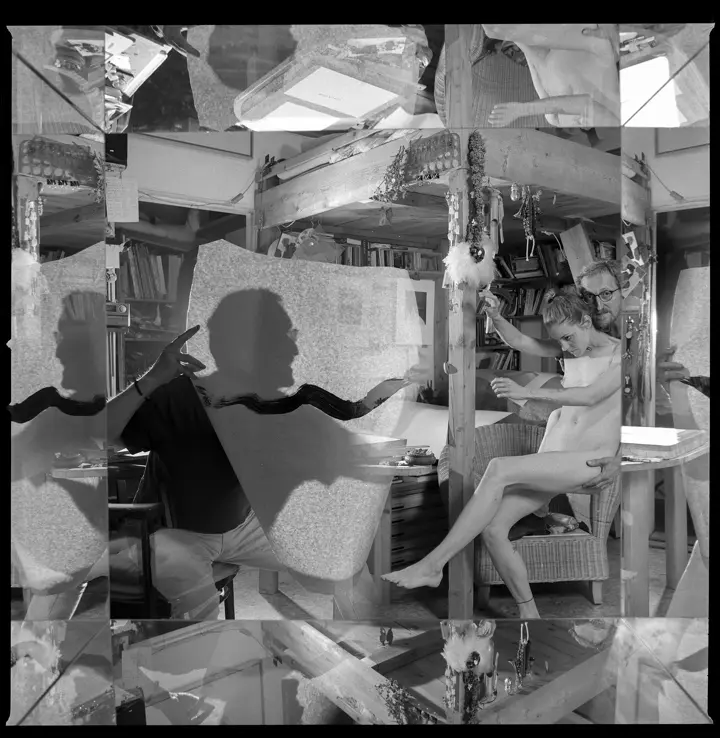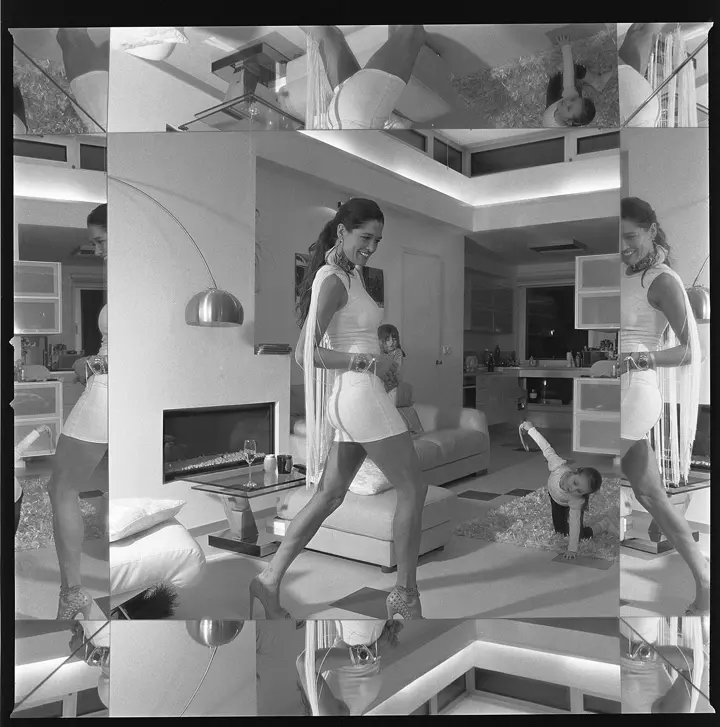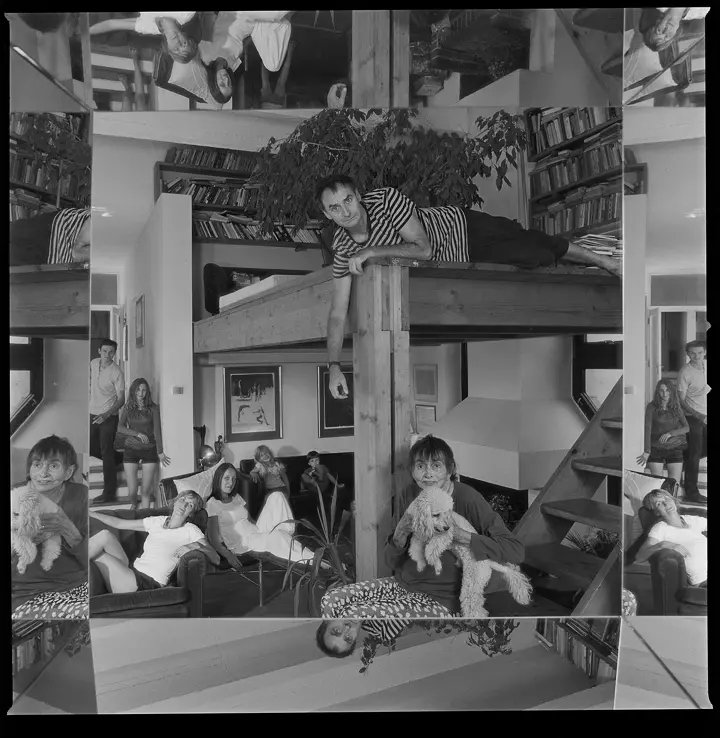Family portrait is a project that came about untraditionally – the composition of figures is captured through a series of mirrors by which an illusion of a different, overturned space is created. The end result is a black and white unedited photograph signed by the author resulting in a standalone art work.
The intentional coupling of two levels of content – one being a stylized composition, other a real space immortalized in time – further enriches the captured moment. Especially so through the overlap of the two content planes via the author’s specific creation process. The aim of the project is to create a holistic image of the older generation’s society as represented by famous personalities and everyday people of artists’ and other professionals’ current families. The voluntary participation in a stage performance or self-capturing signals the conviction that despite some risk it is worth it to undergo a manipulation of oneself by the author for the sake of a progressive reflection. The motivation is the curiosity of the figurants to get to know themselves as different than previously thought, even if the price to pay is the loss of self-critical control. This motivation will allow the photographed to come to terms with the fact that their unusual display can reveal new ways of looking at themselves.
The core theme running through the entire project is the fact that at the time of photographing the deciding factor isn’t a social undertone, personality of the photographed or “little societies” of certain professions, but the psychology of self-perception. In each image a question is asked; whether the person can withstand the unusual role of an actor.
Vasil Stanko
Through his carefully prepared exhibition collection, Vasil Stanko makes it clear that art has not yet given up on expressing stories through the classical genre of group portrait. Evidently he feels that bringing back the tradition of photographing families isn’t necessarily backwards, however Stanko’s work did not stagnate within the confines of the hereditary theme.
Stanko’s collection begs the question of what form his work is based on. Stanko’s compositions aren’t casual improvisations or capturing spontaneously occurring events. Vasil Stanko prefers purposeful creation – in cooperation with the ones photographed, Stanko organizes live images whose reflections he captures through the system of mirrors, only to then finalize and unite the image with his signature.
The point of interest of contemporary artistic photographers is subjectivity, perhaps at times at the expense of straightforward observation, a method used for austere witness testimony. If an author uses multicolored or monochrome stylization, it is a free choice representing his distinctive will and artistic touch. Current technology has ceased to be a limitation predetermining the parameters and special effects of an image. However Stanko’s goal aren’t the optical effects themselves, his intention is to achieve the most creative image possible. With a feel for the content, Stanko depicts the posing personalities and captures the space they’re posing in. He follows his own vision as well as the reality of the subject photographed. That is why Stanko’s work can appeal to a wider audience and at the same time meet the personal representation needs of the photographed subjects; the need to be immortalized via a medium of lasting value.
Stanko understands family as a cohesive collective, playing a foundational role within a wider community. In this respect, the photographical project has gained social significance over the years. It portraits personalities form the fields of cinematography, architecture, politics, education, healthcare, sport, business and so forth. For Stanko the inspiration isn’t so much the models’ profession, but the psychological side of being immortalized; Stanko’s motivation is mainly the models’ interest to open themselves up to the photographical performance as a prerequisite for a depiction without excessive self-control.
With digital technology granting a wide array of people the opportunity to enter the public space, a greater emphasis is placed on serious photographical messages, at least from the more refined and demanding audiences. Seeking superficial souvenirs made to show off within the Family Portrait ensemble would be in vain. They don’t hold value in the artistic sphere. It is no wonder that the overall impression of Stanko’s collection remains urgent. After all, Vasil Stanko has been cultivating a cultured suggestion of intimacy since his early work in portraits, nudes and other genres that he connects with his newer work again and again, as can be seen in his monograph from 2002 conceptualized alongside with the theorist Vaclav Macek or in his retrospective book catalogue of the Slovak New Wave: The 80s published by Tomas Pospech and Lucie F. Fiserova in 2014.
The finishing touch to our impression will be the intersection of all components of the author’s message…
Josef Moucha, curator
Leica Gallery Prague
Školská 28
110 00 Praha 1
Czechia
Saturday - Sunday 1.00 pm - 7.00 pm
